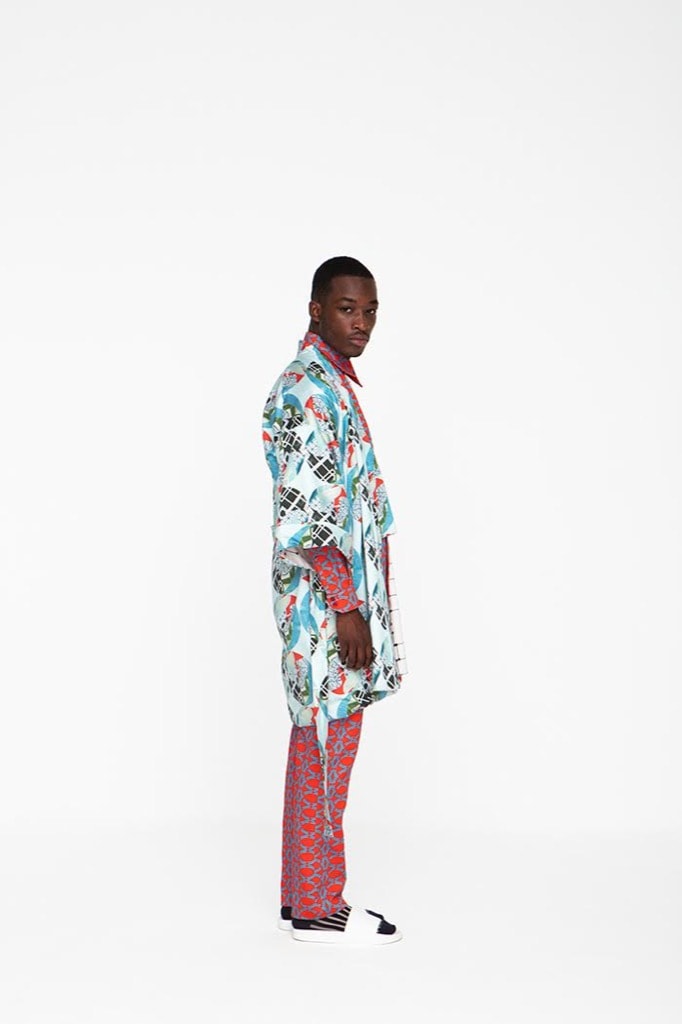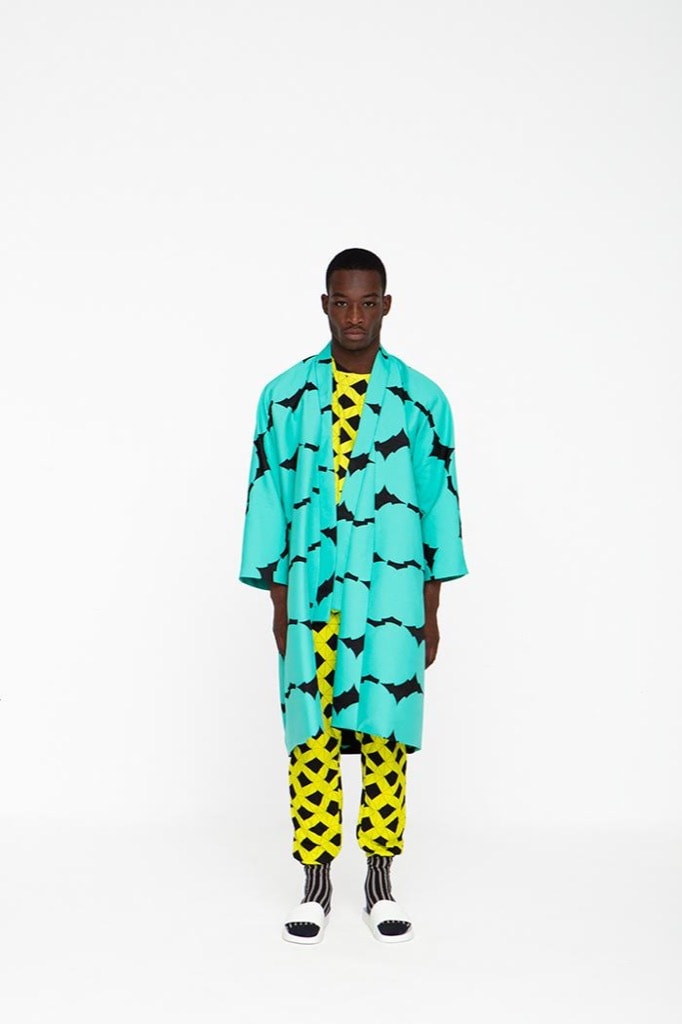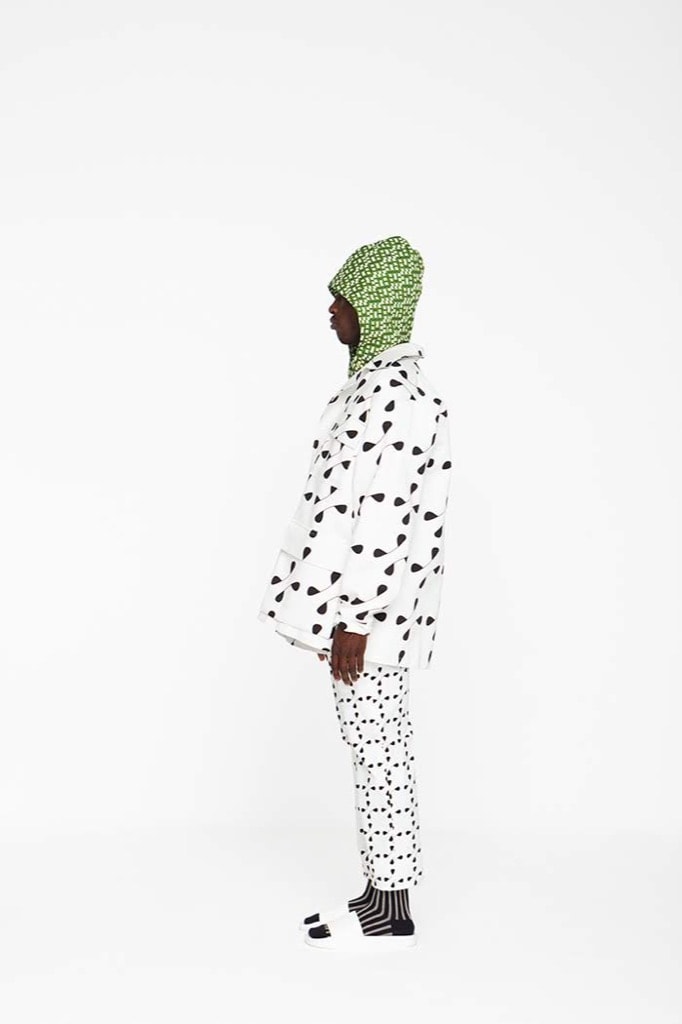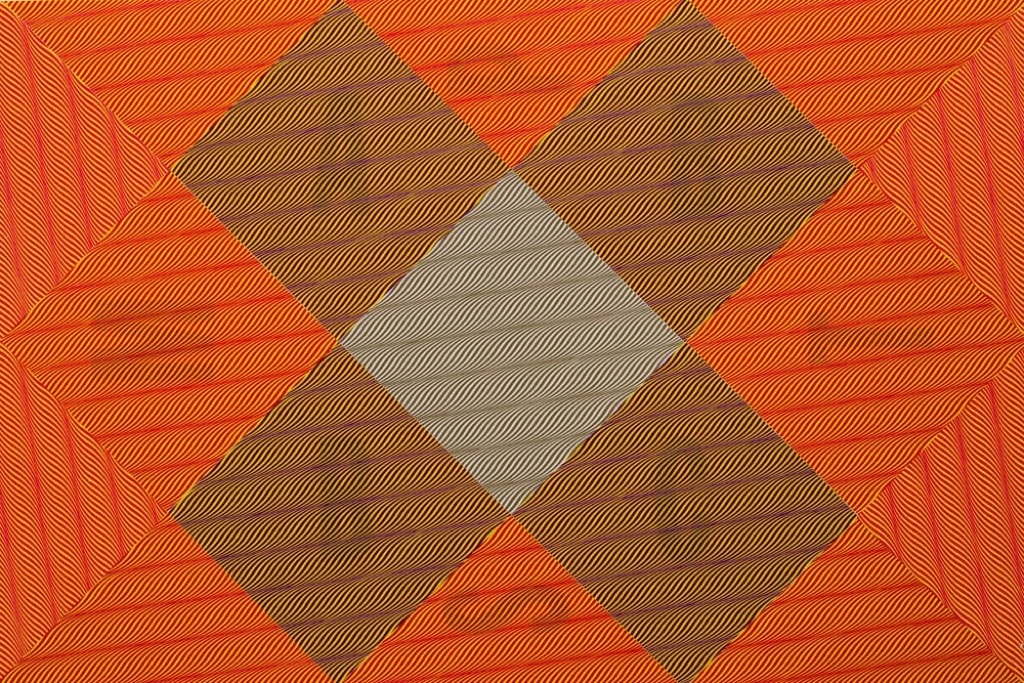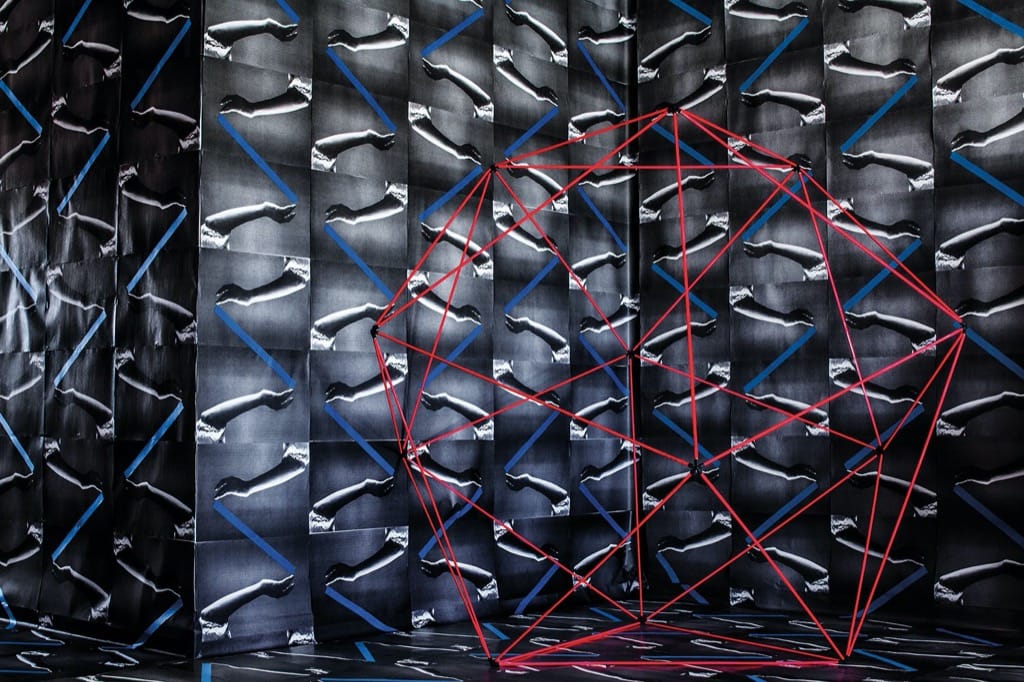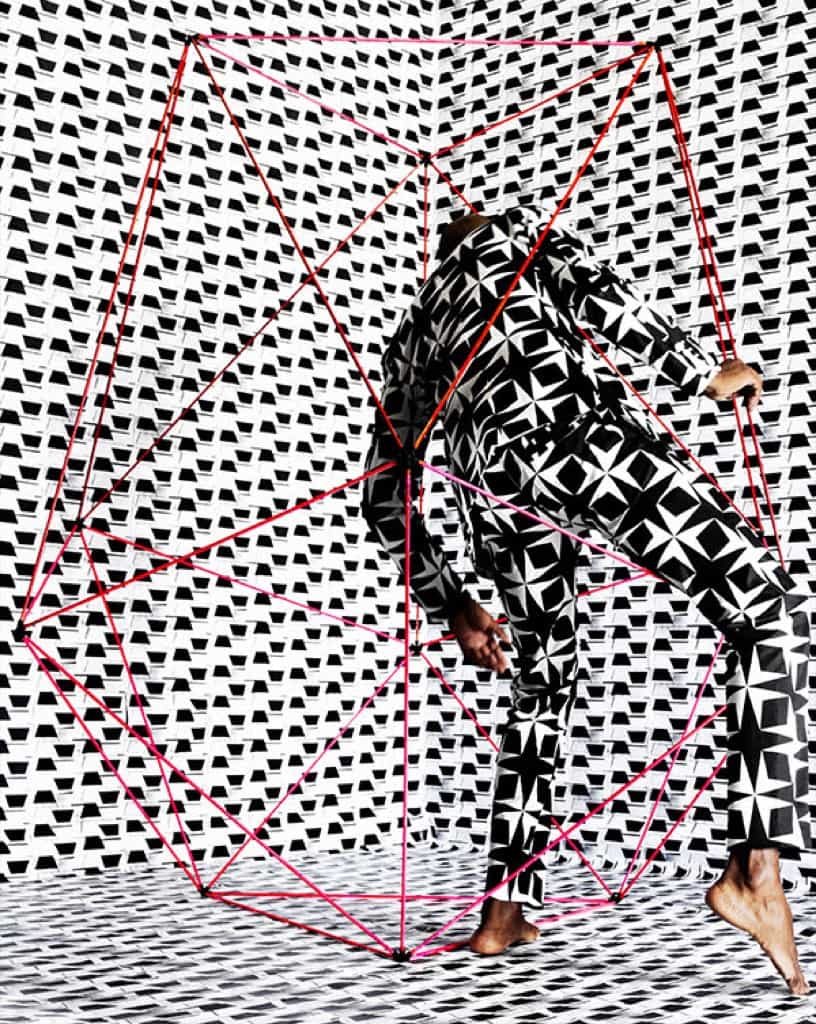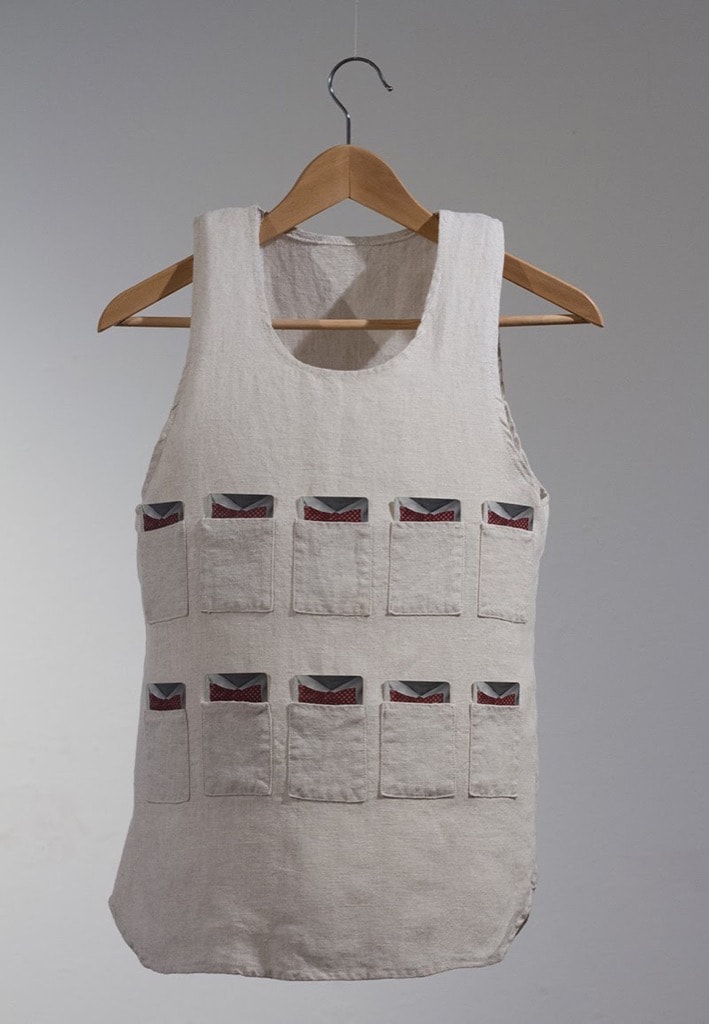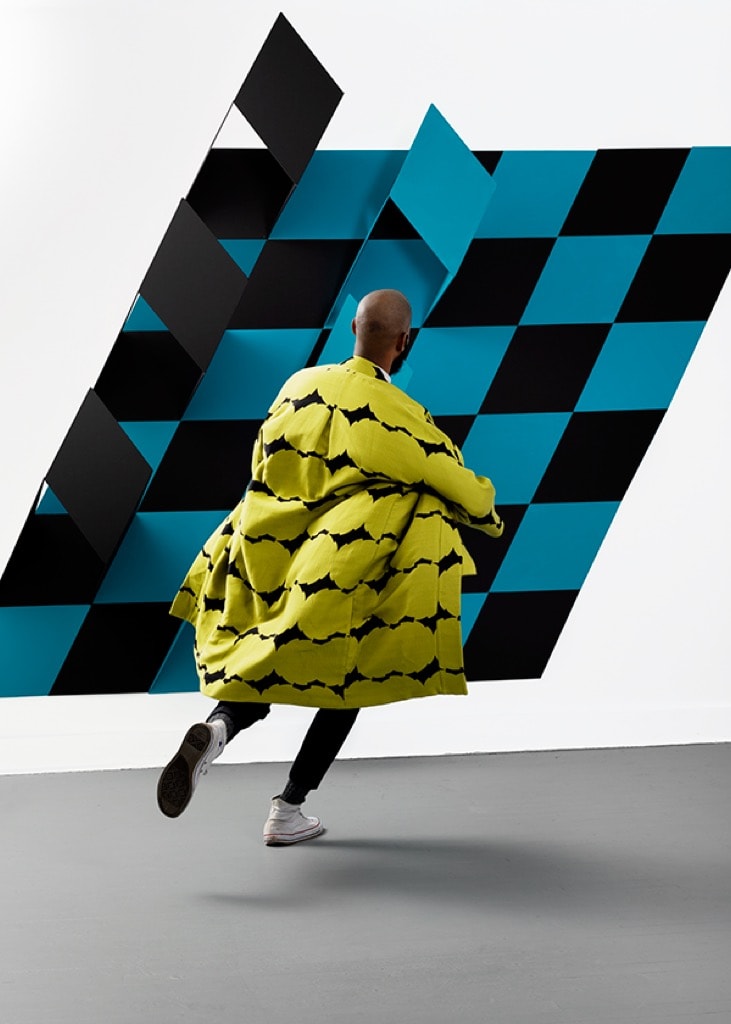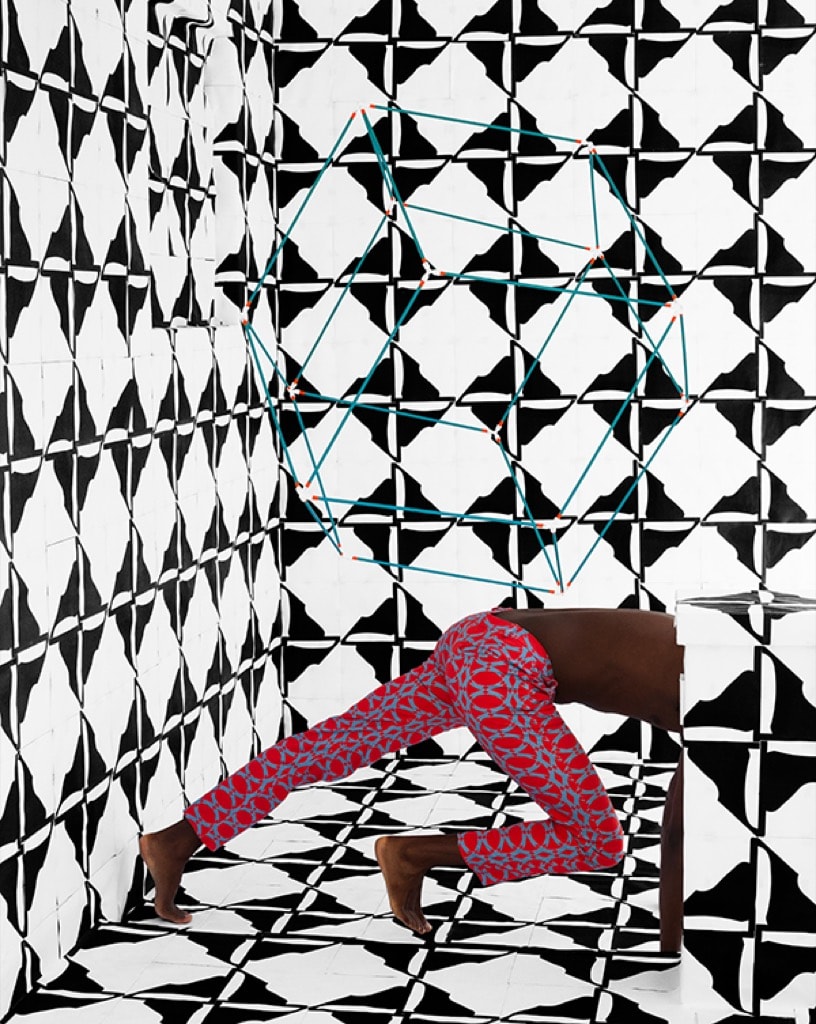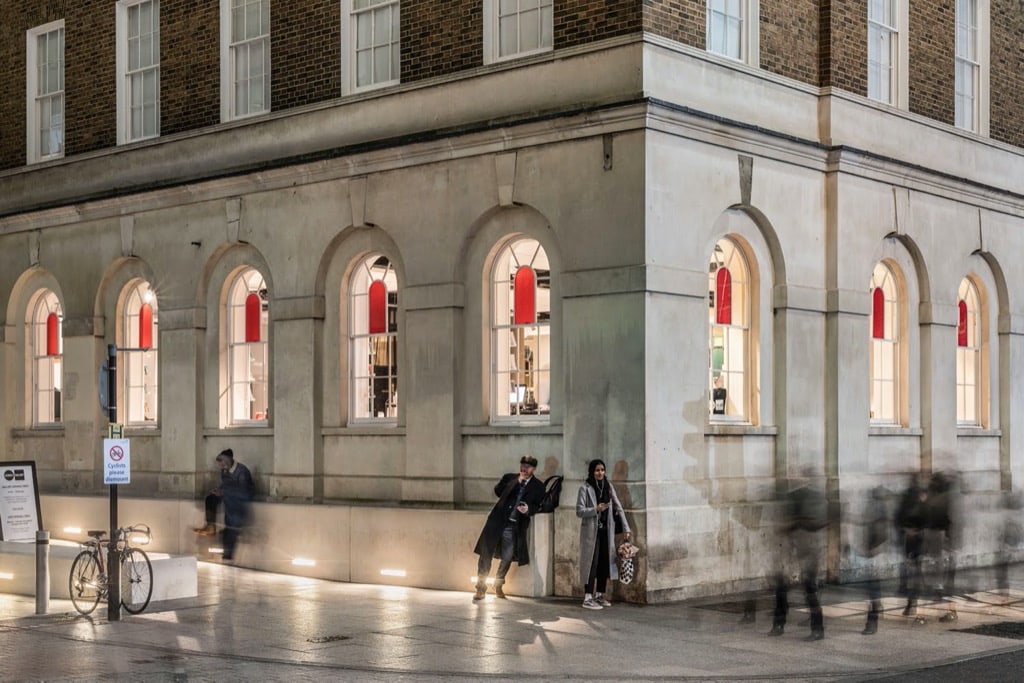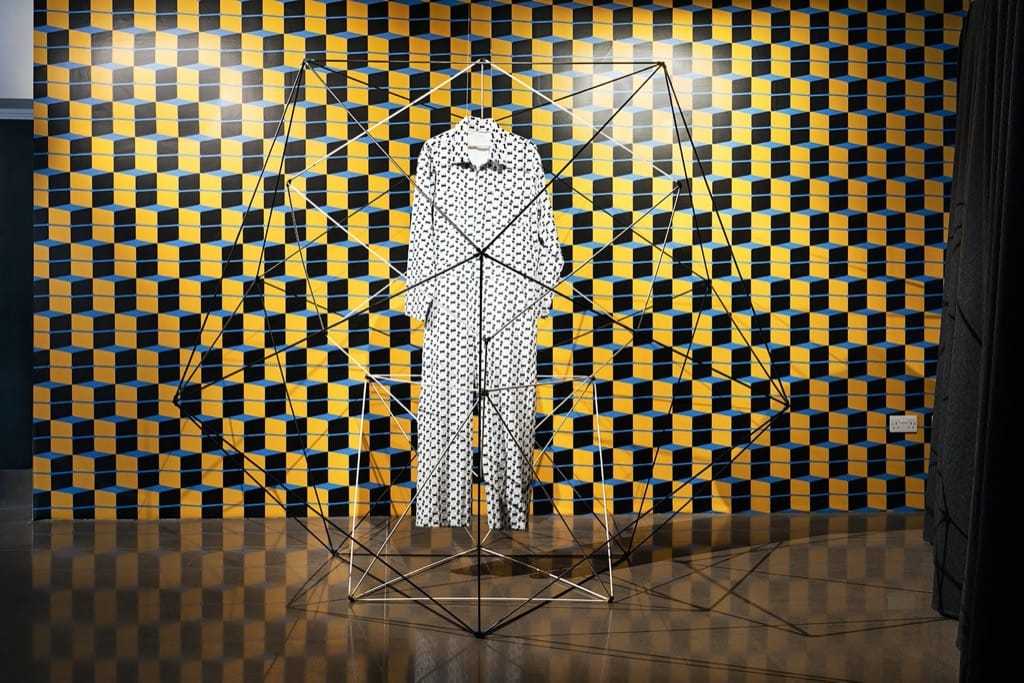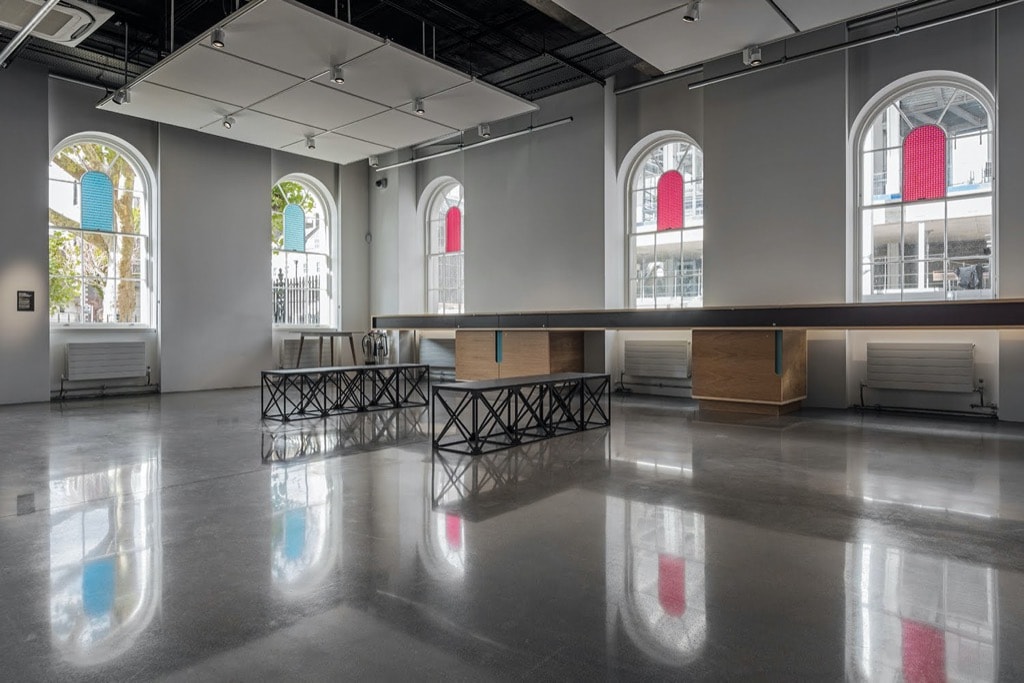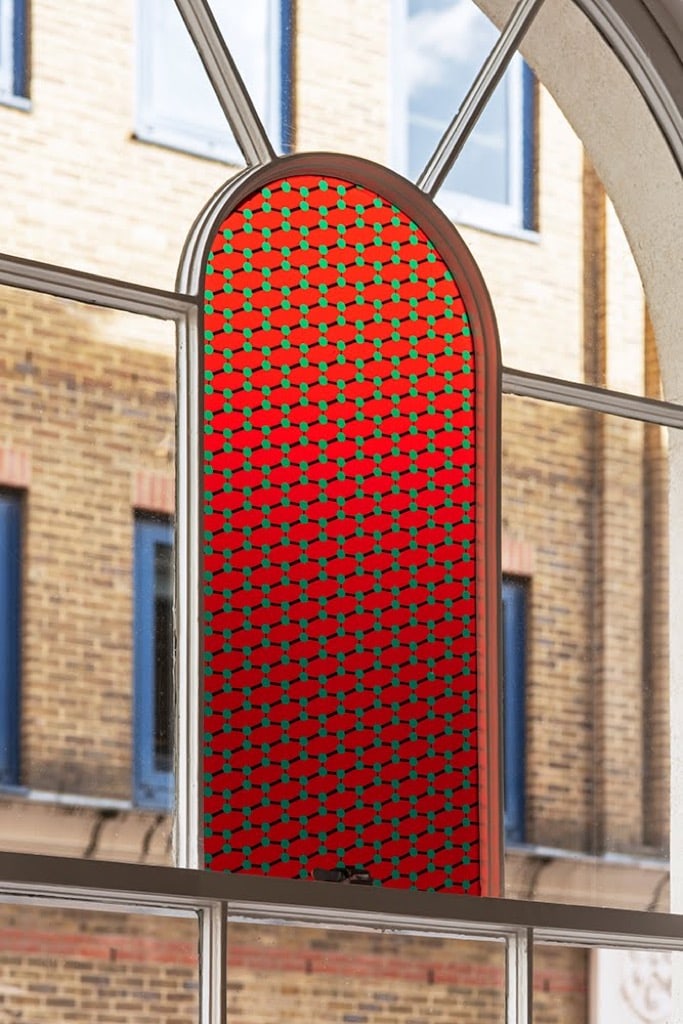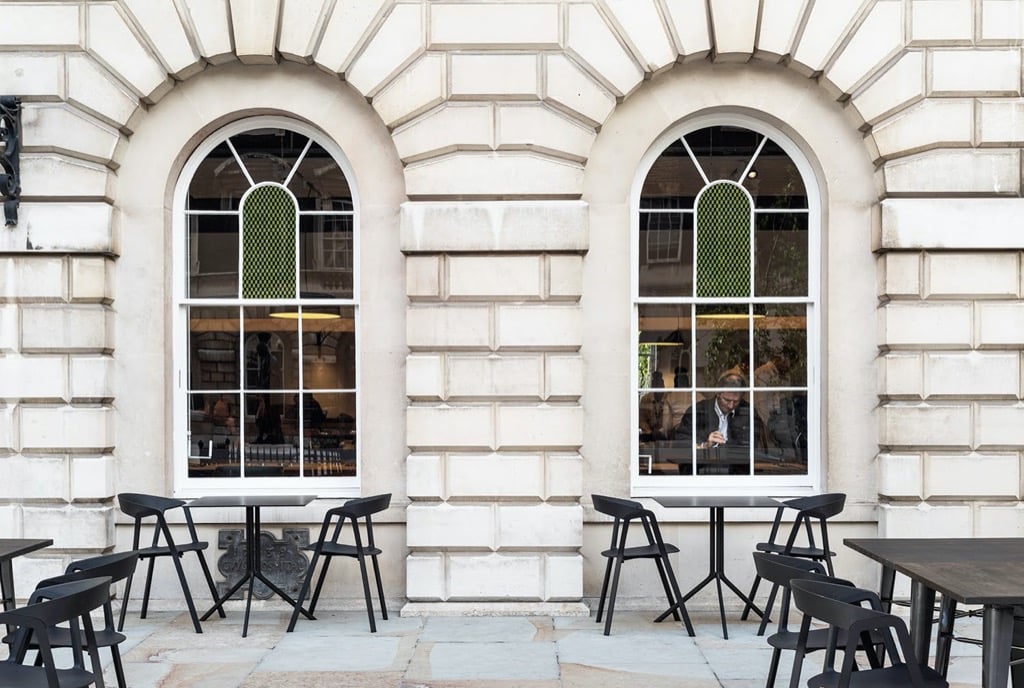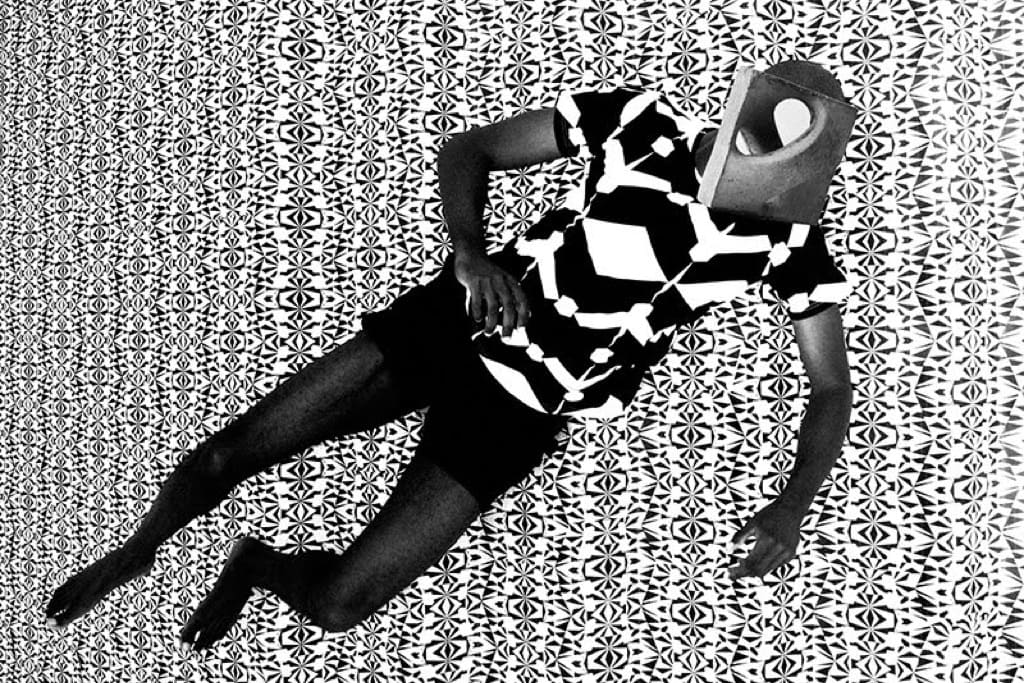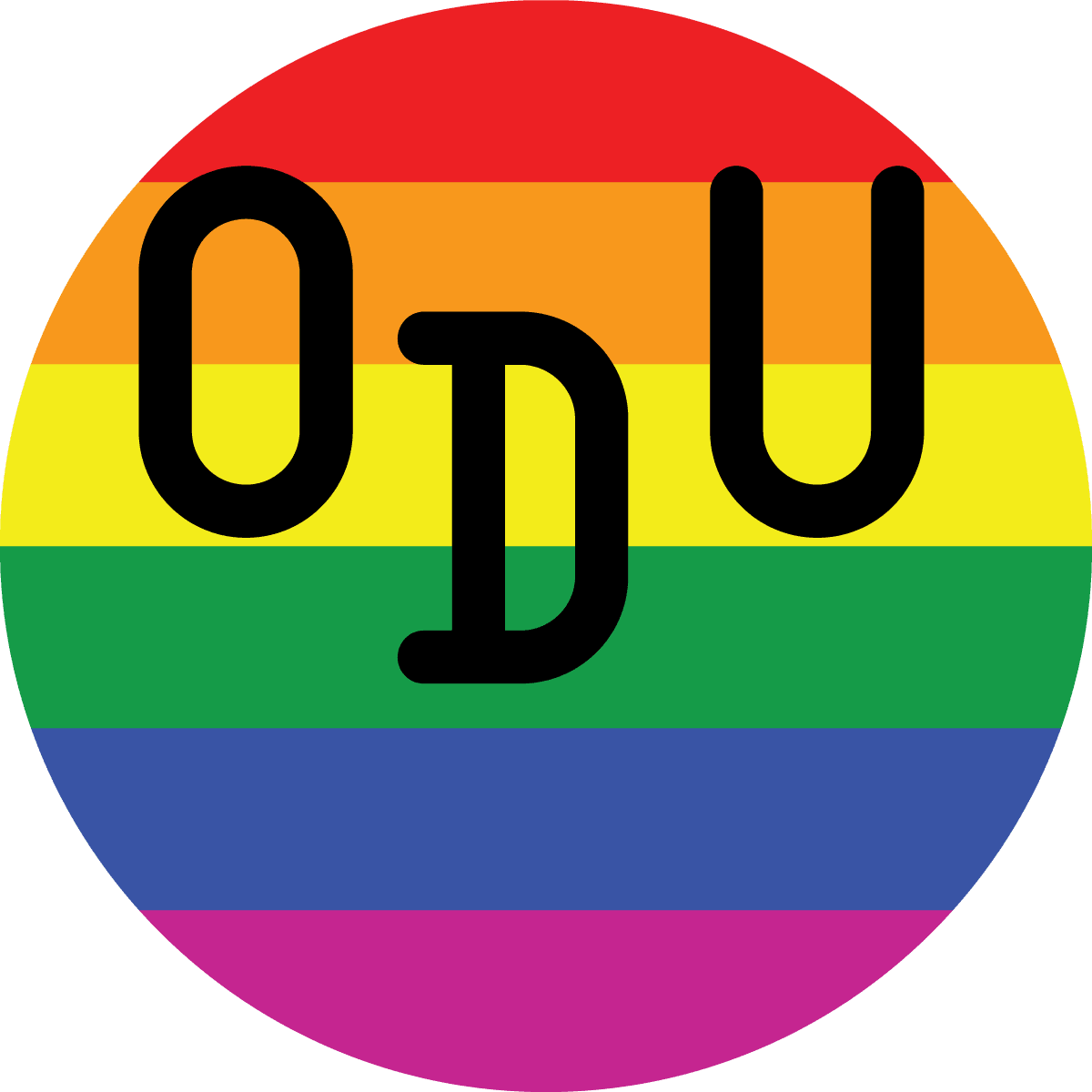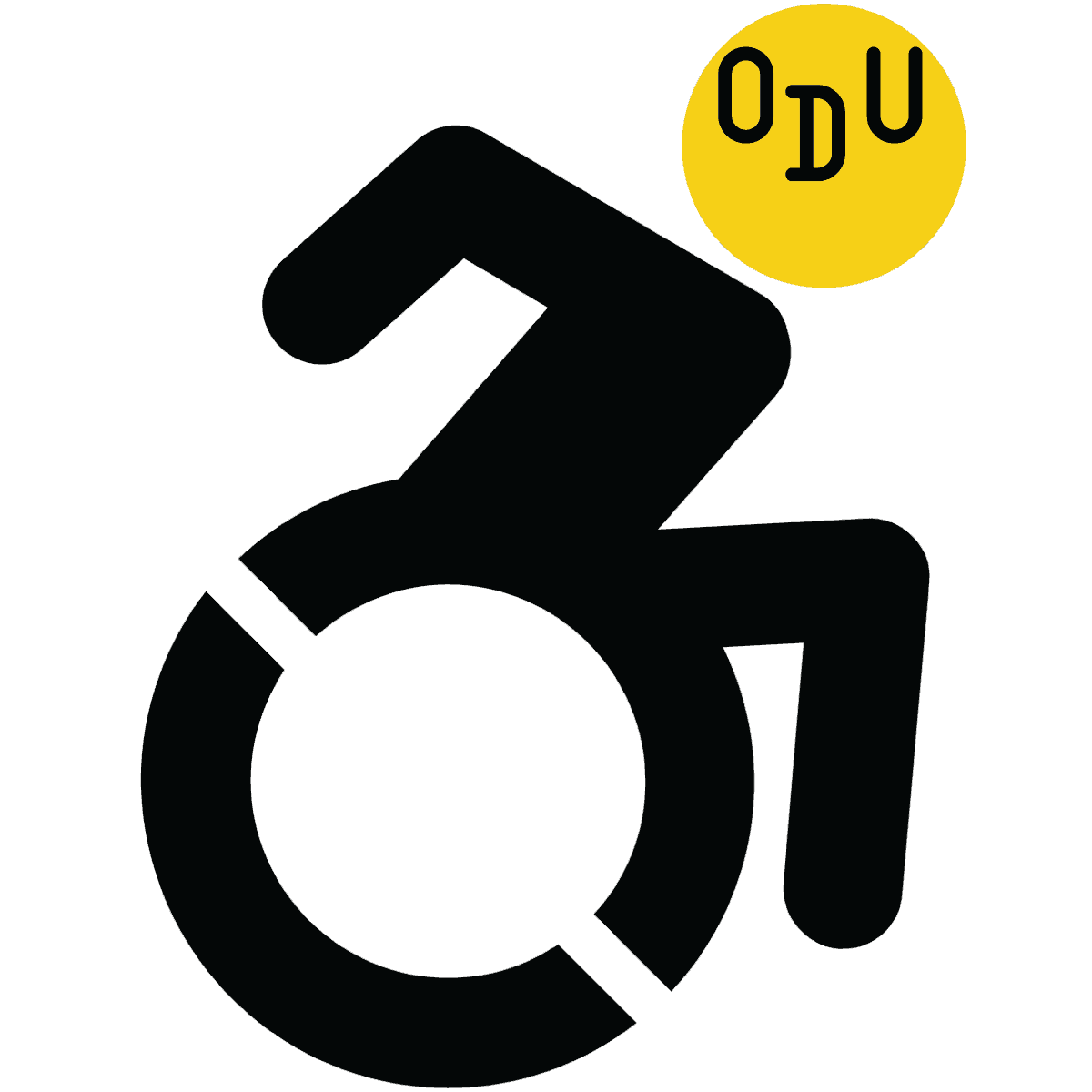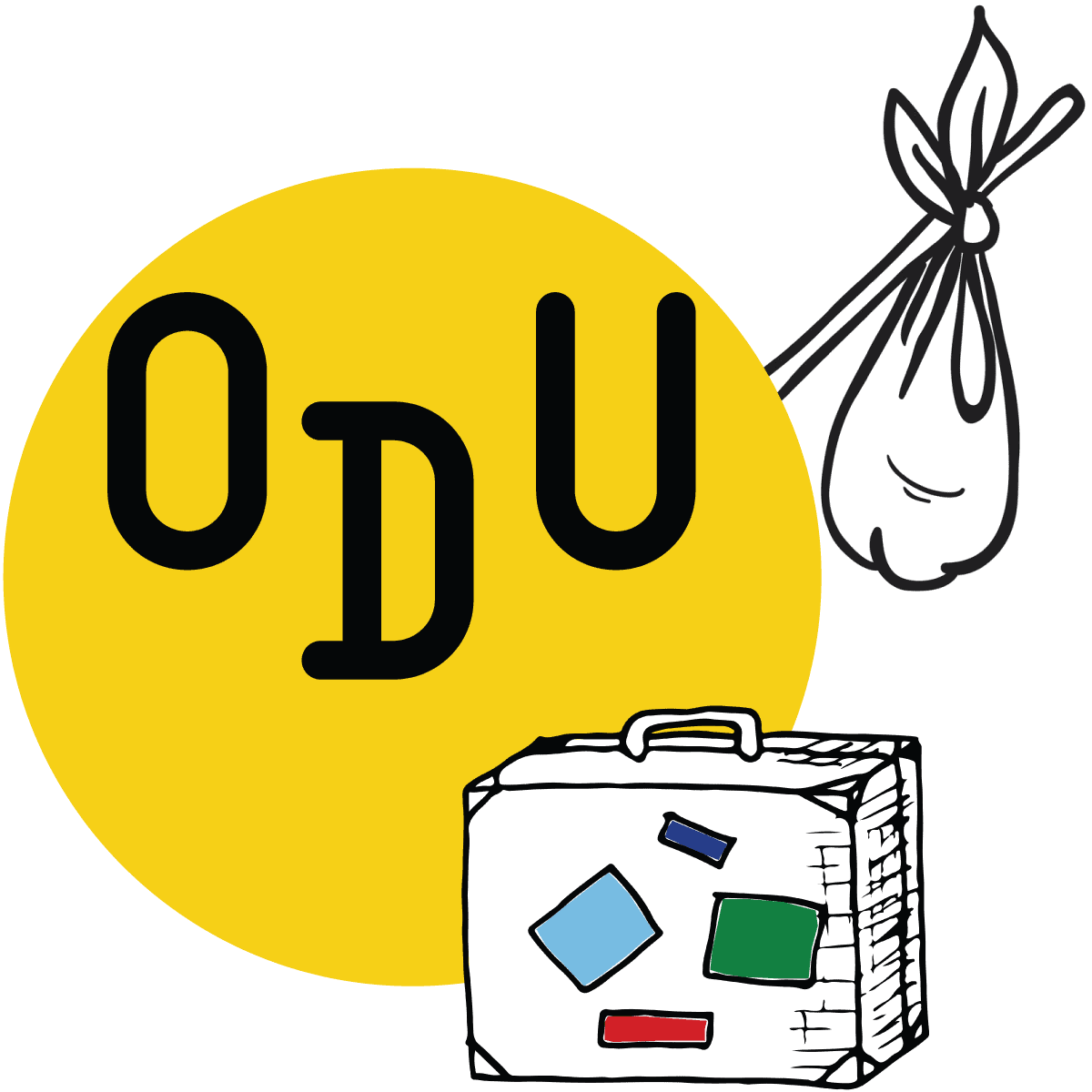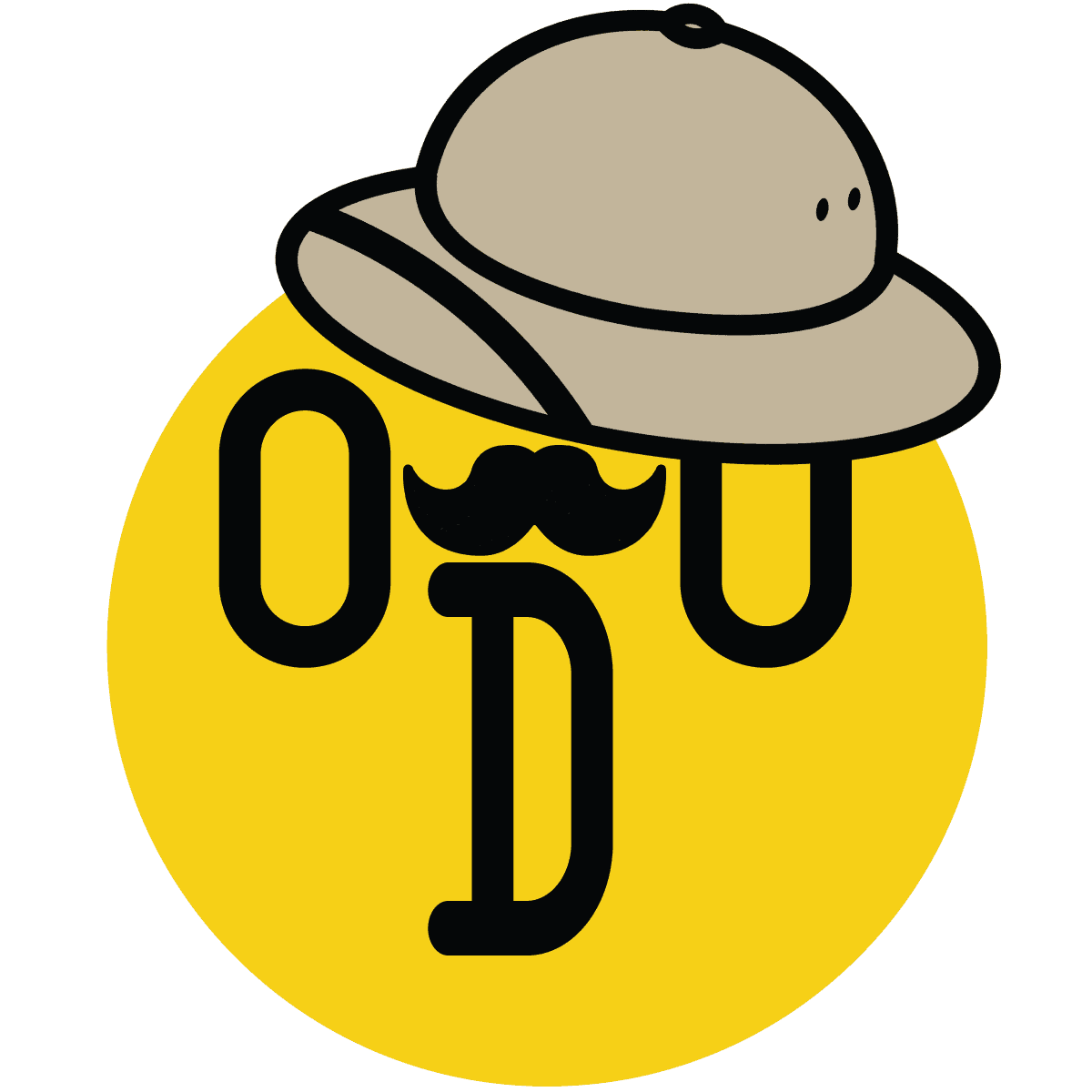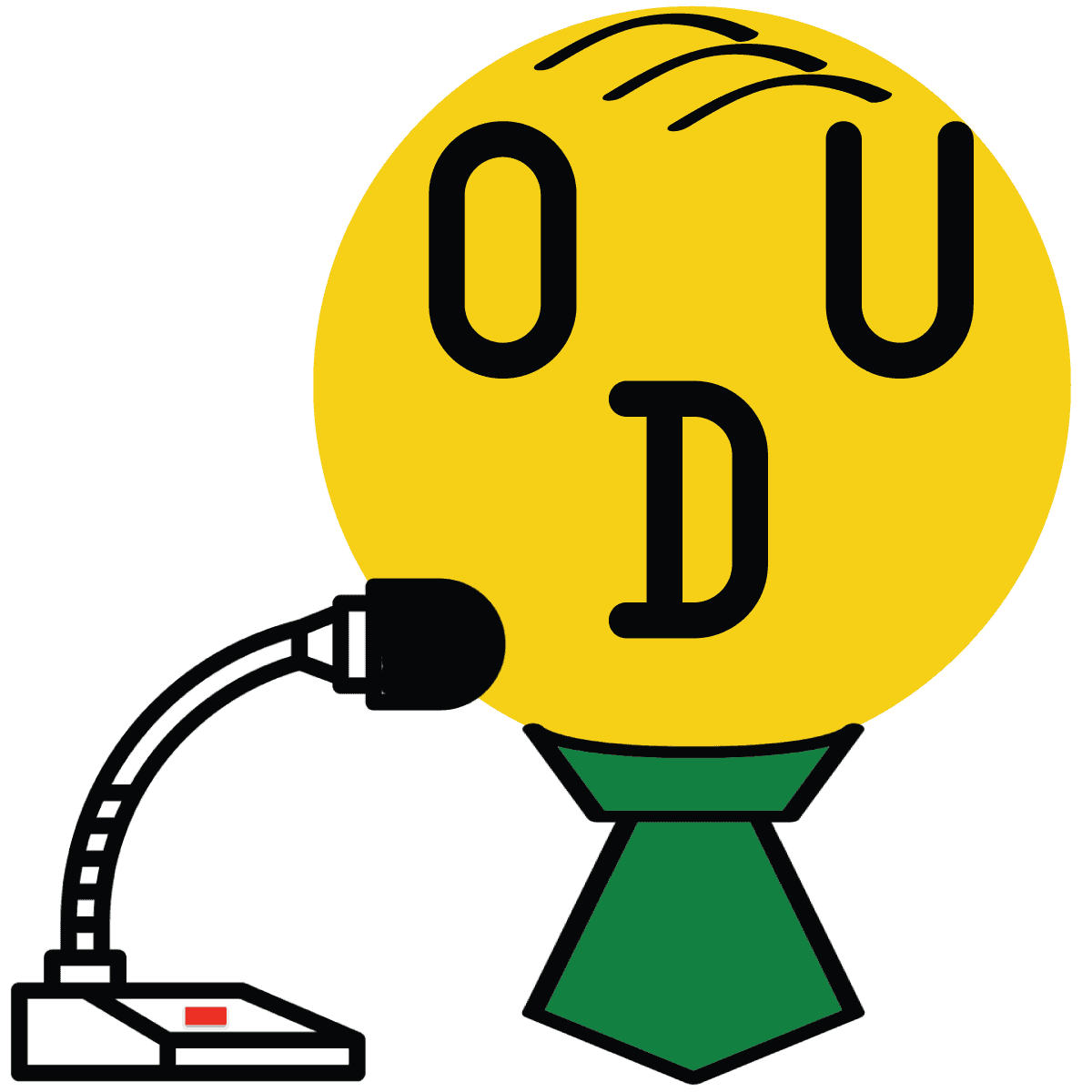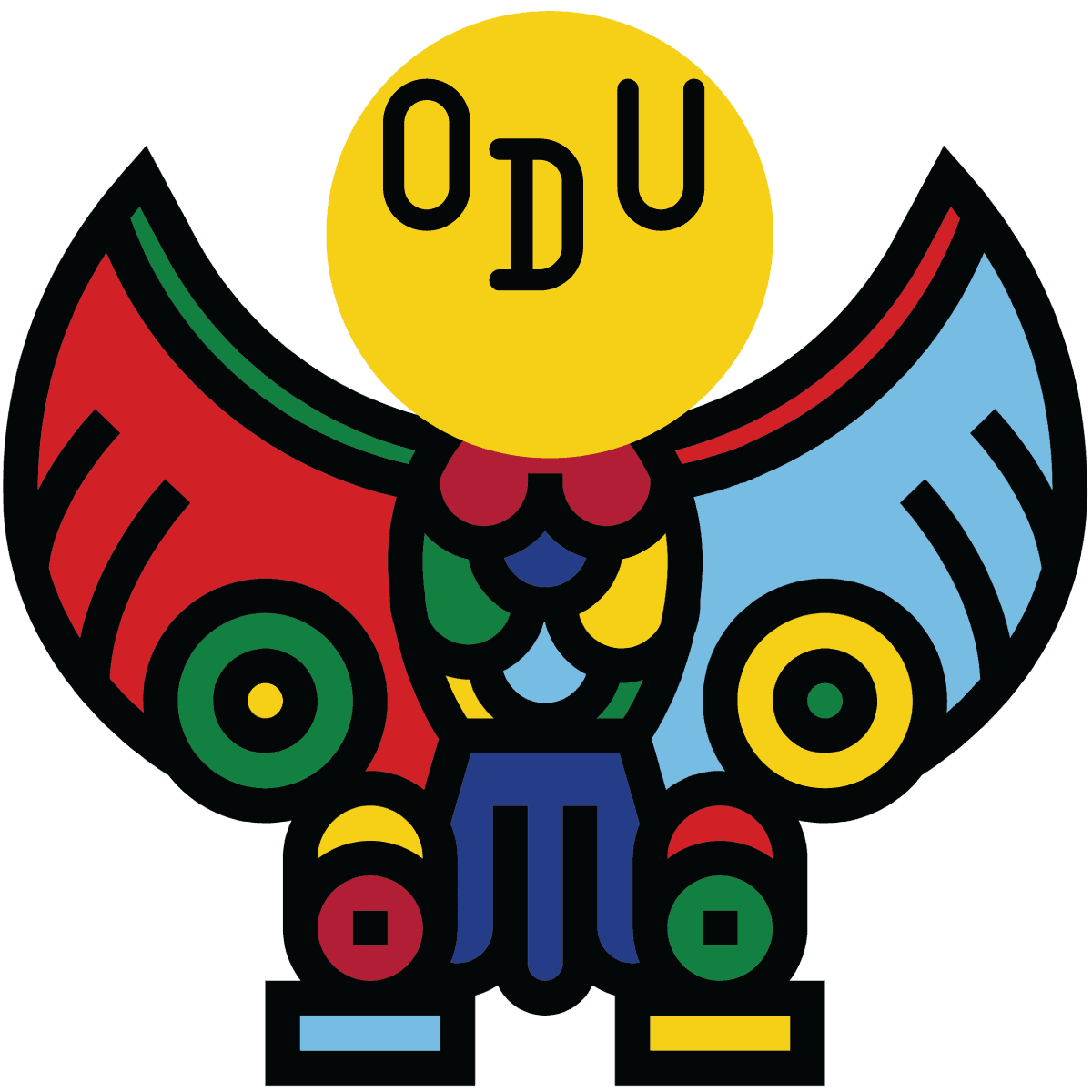An artist on a quest to find out how digital technology can benefit cognition, and his multidisciplinary approach, which includes graphic design, photography, fashion and psychology


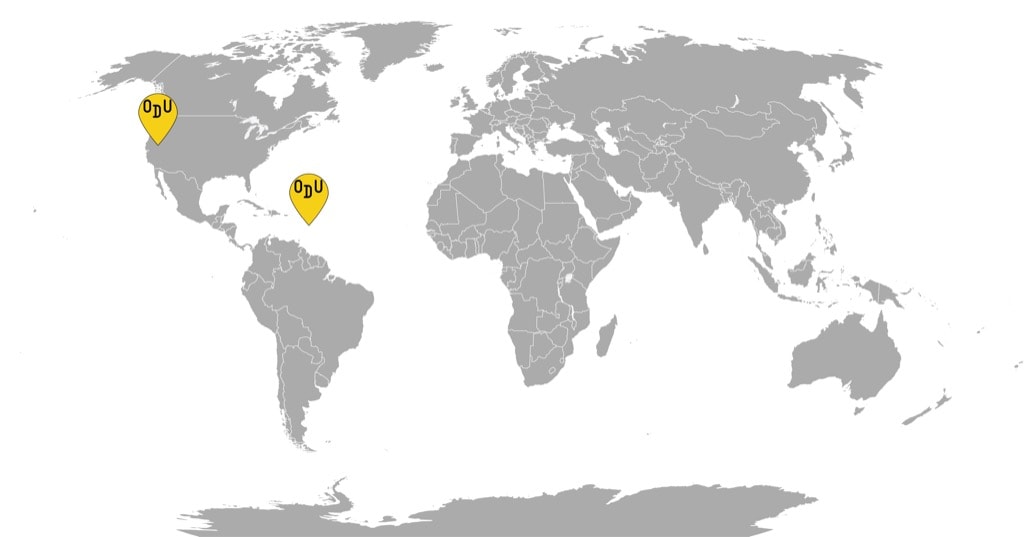
FROM BARBADOS and UNITED STATES
WHAT’S GOING ON: Striking, bold, oddly familiar, but non-organic patterns erupt in the middle of an environment. They cover walls, furniture, crawl onto the clothes, like vines growing up the trellis, and spread, limitless, to gently digitize the surroundings, only leaving space for what really matters: the living beings. An approach of augmenting reality that’s filled with empathy and doesn’t compromise identities: that’s how Mark King, a Barbadian-American artist rolls when he creates his multidisciplinary art pieces that question the relationship of human behavior to the environment. By offering simulations as substitutes for the usual surroundings and garments, King places his subjects on a green-screen of sorts, where their personalities are artificially enhanced, but never erased, to get deeper into the neurological response to the framework of daily life. King’s projects have included explorations of plastics, the world’s flags, the clothing industry, and substance addiction.
WHO MADE IT: Born in Washington DC in a diplomatic family of Barbadian origin, Mark King had lived in Barbados, Bahamas, and Belgium throughout his formative years, to return to the US just before university. After his completion of an MFA in photography from San Francisco’s Academy of Arts, King proceeded to travel the world, only this time as an artist, to residences in Aruba, Trinidad & Tobago, and Belgium. In Barbados, the country’s leading contemporary art vehicle, Fresh Milk inaugurated King into the local art scene with his first commission. Subsequent ones included Scotland, England, and the Netherlands, with which King holds a special bond: his frequent collaborator is the Dutch fashion designer Bregje Cox, and the two have worked on series of art projects together.
WHY DO WE CARE: Due to his diverse childhood, which included periods in the US, the Caribbean, and Europe, Mark King’s artistic sensibility seems to fuse qualities from each culture. But he also adds elements from his own conceptual understanding of what art can do for the human future. Usually, artists heavily interested in technologies and futuristic concepts tend to tear away from the contemporary existence completely, retaining only elements that can serve as mementos or time-markers. King, however, does not seek to swap the future for the present entirely. His goal, instead, is to establish how technology and digital reworking of existing objects and habitats can alter human perception and cognition and to be able to manipulate them to the social advantage, or for further understanding of how human brains work.
WHY YOU NEED TO PAY ATTENTION: In the contemporary world where human identities, as represented to the majority of the world, all become mosaics of hashtags, memes, and gifs, or, essentially, bites and pixels, how do we exist within this changing landscape in real life? And how do we use it to our advantage? Mark King’s quest in the art world is to find ways in which the widening perspectives for technological enhancement of life are not only aesthetically pleasing or mind-blowing in speculative ways. He also wants them to be practically useful and offer much-needed insight into the way human cognition works. For instance, King’s collaborations with fashion designer Bregje Cox are centered around the theory of Enclothed Cognition—basically, the “dress for success” maxim that the two artists explore through an empirical application devoid of the capitalist connotation of productivity, focusing on brain function instead.
Meanwhile, in his latest art project, “Look on Me and Be Renewed,” King worked with John Marsden, a professor of addiction psychology and Changing 7, a group of individuals who had experienced treatment and recovery for substance use. King’s purpose was to identify and locate visual triggers that may have been influencing the shifts in recovery and help the participants build new relationships with these visual cues after encountering them as abstract patterns introduced to their environment. Visually striking and inviting, Mark King’s works are always an inquisitive, enriching, and rewarding journey to the threshold between what exists around us, and what the neurons let us see. They allow a resourceful, aware, and very human approach to science and technology, and work to widen the possibilities of art, without forgoing its aesthetic essence. More artists like this from everywhere: how’s that resolution for the decade?
For more content like this sign up for our weekly newsletter


